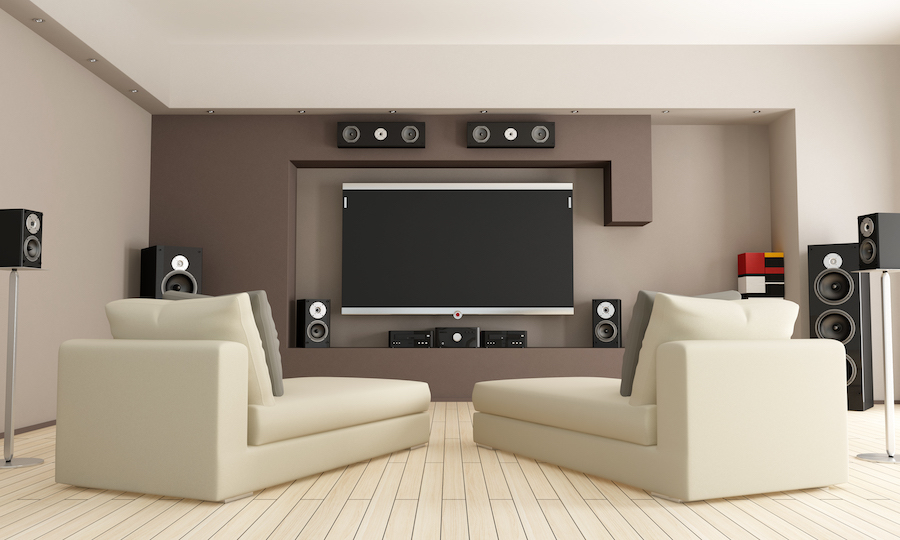A Comprehensive Guide to Multi-Channel Home Theaters
Experience Movie Magic Right in Your Home

If you’re looking to build a home theater, you’ve probably realized that there isn’t a one-size-fits-all solution. There are so many components of a theater that can (and should!) be customized based on your space and personal preference. For example, you can choose between a TV or a projector and screen. You also get to choose the lighting, seating, and so much more.
You also have many options when it comes to your home theater’s audio system. There are sound bars and two-speaker stereo systems you could choose. But for a truly cinematic experience, you should consider creating a multi-channel home theater. Multi-channel theaters will give that cinematic audio you crave and will astound you with every music note and piece of dialogue. Keep reading to learn more about multi-channel theaters and what they can bring to your Portland, OR, home.
SEE ALSO: How Hunter Douglas Does Double-Duty with Duolite Motorized Blinds
What Is a Multi-Channel Theater?
A multi-channel theater audio system uses multiple speakers around the room to create a diverse and immersive sound experience. Audio signals from the source—such as your Blu-ray player or streaming device—are sent to the receiver, which then processes and sends them through multiple channels to every speaker. The result is that different speakers get different audio channels. When put together, it creates a layered and immersive sound experience that rivals any movie theater.
Benefits of Surround Sound
Surround sound has become an industry standard in theater audio. Because of the multiple speakers, there’s more attention to detail in every aspect of the movie’s sound. Everything from the soaring soundtrack to the trembling sound effects will be heightened.
In a surround system, speakers are typically placed in front of the room, off to the side, in the back, and sometimes even on the ceiling. This ensures that audio is evenly distributed, so every person can hear without blasting the volume. It also makes the listener feeling drawn into the movie, like the action is happening all around them and not just in front.
Components of Multi-Channel Audio
For a multi-channel audio system to work effectively, you’ll need a few components. First, you’ll need the receiver, which receives and processes the audio signals that are sent to each speaker. Second, you’ll need an array of speakers. Standard multi-channel systems have five speakers, but some receivers may be able to handle seven or more. These speakers can be an array of loudspeakers, in-wall speakers, satellite speakers, or whatever suits your needs. You’ll also need at least one subwoofer to produce those smooth low frequencies.
Contact Eighteen Group today to get started building your multi-channel home theater. Our team can explain the technology to you and help you pick out the best speaker system and receiver for you and your Portland, OR, home. Then, our expert team of technicians will install them, so you experience astounding audio with every movie and TV show.




